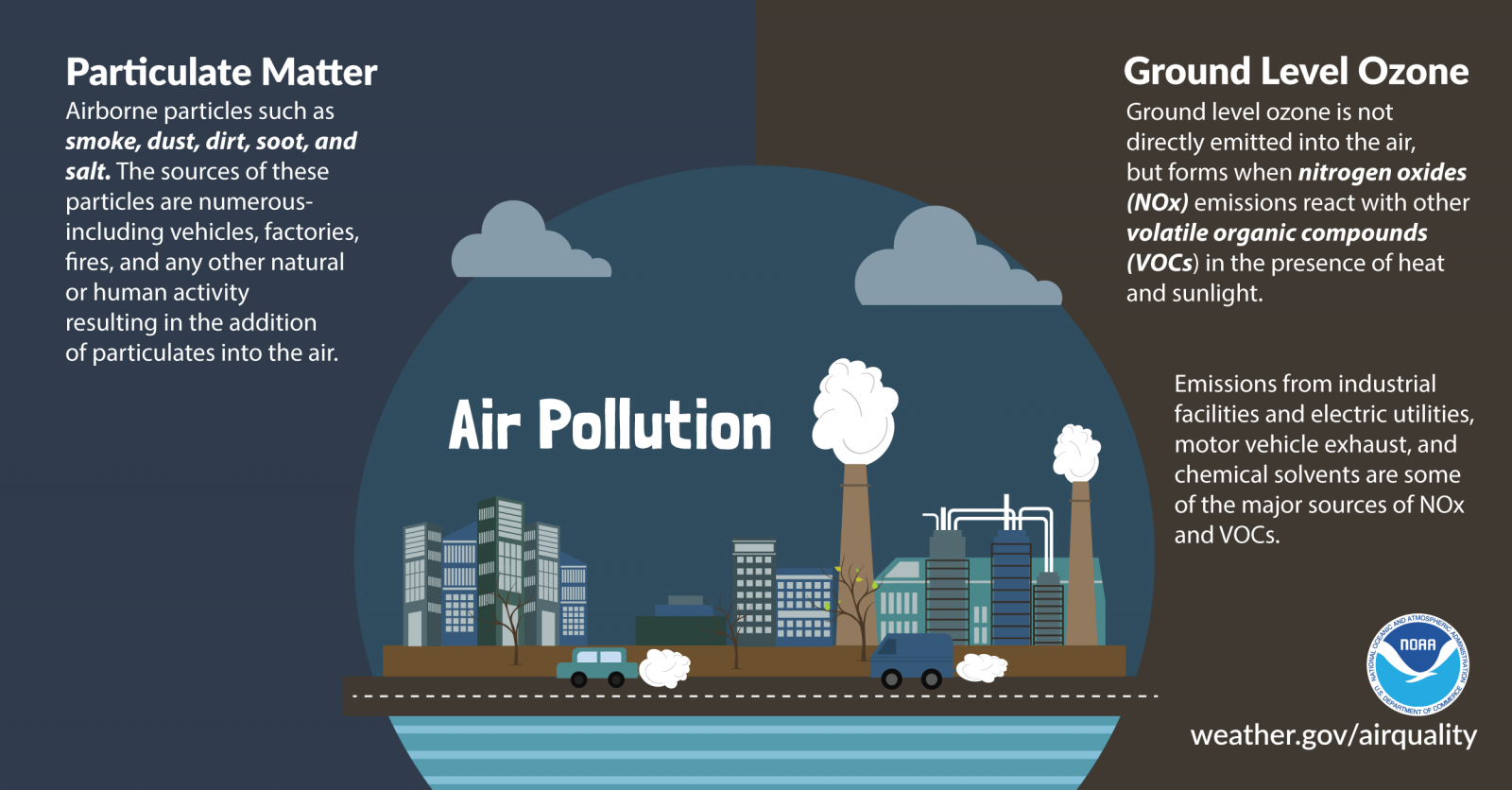
Air quality affects the air we breathe. There are many factors that can lead to poor air quality, but the two most common are related to elevated concentrations of ground-level ozone or particulate matter.
Ground level ozone forms when nitrogen oxides from sources like vehicle exhaust and industrial emissions react with organic compounds in the presence of heat and sunlight. Per EPA, ozone can cause a number of health problems, including coughing, breathing difficulty, and lung damage. Exposure to ozone can make the lungs more susceptible to infection, aggravate lung diseases, increase the frequency of asthma attacks, and increase the risk of early death from heart or lung disease (see https://document.airnow.gov/air-quality-guide-for-ozone.pdf).
Particulate matter in the air consists of solid and liquid particles including smoke, dust and other aerosols, some of which are directly emitted and others are resulting from chemical transformations., The sources of these particles are numerous- including vehicles, factories, power plants, fires, other natural phenomena and human activities. Particle pollution is linked to a number of health problems, including coughing, wheezing, reduced lung function, asthma attacks, heart attacks, strokes and even early death (see https://document.
The weather can have a significant impact on air quality since different aspects of the weather affect the amounts of ozone and particulates that are present in a specific area. Sunshine, rain, higher temperatures, wind speed, air turbulence, and mixing depths all affect pollutant concentrations.
National Weather Service provides model forecast guidance for ozone, dust and fine particulate matter twice daily and smoke predictions once daily for next 48 hours. State and local agencies use NWS model guidance to issue routine air quality forecasts as well as non-routine Air Quality Alerts, which are then relayed by the NWS Weather Forecast Offices (WFOs). When Air Quality Alerts are in effect, there are many actions you can take to stay safe and protect your health.
If you would like to help reduce air pollution, you can take the following measures:
(https://document.airnow.gov/air-quality-guide-for-ozone.pdf) and
(https://document.airnow.gov/air-quality-guide-for-particle-pollution.pdf)
EPA compiles the official air quality forecasts at https://www.airnow.gov/ and NWS provides hour-by-hour predictions of air quality at https://airquality.weather.gov/.